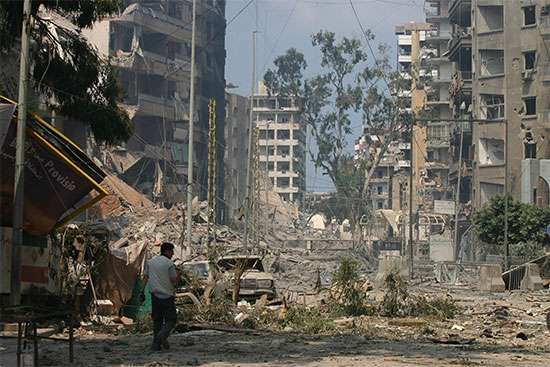Numerous wars and acts of violence between Arabs and Jews have followed. Since the 1948 Arab-Israeli War a partial list includes:
Suez Crisis:
Relations between Israel and Egypt were rocky in the years following the 1948 war. In 1956, Egyptian president Gamal Abdel Nasser took over and nationalized the Suez Canal. The canal is the shipping waterway connecting the Red Sea to the Mediterranean Sea. With British and French help, Israel retook the Suez Canal.
Six-Day War:
In what started as a surprise attack, Israel in 1967 defeated Egypt, Jordan and Syria in six days. After this brief war, Israel took control of the Gaza Strip, Sinai Peninsula, the West Bank, and Golan Heights. These areas were considered by Israel to have been “occupied” territory.
Yom Kippur War:
In 1973, hoping to catch the Israeli army off guard Egypt and Syria launched air strikes against Israel. They chose the Holy Day of Yom Kippur to start. The fighting went on for two weeks, until the UN adopted a resolution to stop the war. Syria hoped to recapture the Golan Heights during this battle but was unsuccessful. In 1981, Israel annexed the Golan Heights, but Syria continued to claim it as territory.
Lebanon War:
In 1982, Israel invaded Lebanon and ejected the Palestine Liberation Organization (PLO). This group, had started in 1964. The PLO declared all Arab citizens living in Palestine up to 1947 to be called “Palestinians,”. It focused on creating a Palestinian state within Israel.
First Palestinian Intifada:
Israeli occupation of Gaza and the West Bank led to a 1987 Palestinian uprising. The uprising resulted in hundreds of deaths. A peace process, known as the Oslo Peace Accords, ended the Intifada. Intifada is an Arabic word meaning “shaking off”. After the Intifada the Palestinian Authority formed. It took over some territories in Israel. In 1997, the Israeli army withdrew from parts of the West Bank.
Second Palestinian Intifada:
Palestinians launched suicide bombs and other attacks on Israelis in 2000. The resulting violence lasted for years before a cease-fire was reached. Israel announced a plan to remove all troops and Jewish settlements from the Gaza strip by the end of 2005.
Second Lebanon War:
Israel went to war with Hezbollah, a Shiite Islamic militant group in Lebanon, in 2006. A UN-negotiated ceasefire ended the conflict a couple of months after it started.
Hamas Wars:
Israel has been involved in repeated violence with Hamas. Hamas is a Sunni Islamist militant group. It assumed Palestinian power in 2006. Since Hamas took over some of the more significant conflicts took place beginning in 2008, 2012 and 2014.
This is a Muslim – Jew war
Clashes between Israelis and Palestinians are still commonplace. Key territories of land are divided. Some are claimed by both groups. Both cite Jerusalem as their capital. Both groups blame each other for terror attacks that kill civilians. Israel doesn’t officially recognize Palestine as a state, more than 135 UN member nations do.
Several countries have pushed for more peace agreements in recent years. Many have suggested a two-state solution but acknowledge that Israelis and Palestinians are unlikely to settle on borders. The holy books of Islam are replete with the words of hate and violence specifically targeted at the Jews.
Israeli Prime Minister Benjamin Netanyahu has supported the two-state solution. He has felt pressure to change his stance. The opposition accuses Netanyahu of encouraging Jewish settlements in Palestinian areas. Apparently, doing that while still backing a two-state solution is a problem.
Conclusion
The United States is one of Israel’s closest allies. In a visit to Israel in May 2017, President Trump urged Netanyahu to embrace peace agreements with Palestinians. Israel continues to experience unpredictable war and violence. Many of its national leaders and citizens are hoping for a secure, stable nation in the future. Islam has a doctrine of conquest. Unless and until that changes there will be no peace.
